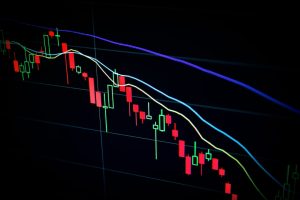CFD trading, also known as Contract for Difference trading, is a popular form of trading in the foreign exchange market. CFD trading allows traders to speculate on the price movements of different financial instruments, including currencies, stocks, indices, and commodities, without physically owning the underlying asset. In this article, we will discuss what CFD trading is, how it works, and its benefits and risks.
What is CFD trading?
CFD trading is a form of derivative trading where traders can speculate on the price movements of different financial instruments without actually owning the underlying asset. In other words, traders can buy or sell contracts that represent the underlying asset’s value. The profit or loss on the trade is determined by the difference in price between the opening and closing of the trade.
CFDs are traded on margin, which means that traders only need to deposit a fraction of the total trade value to open a position. This allows traders to magnify their profits or losses, depending on the price movements of the underlying asset.
How does CFD trading work?
CFD trading works by allowing traders to buy or sell contracts that represent the underlying asset’s value. For example, if a trader wants to speculate on the price movements of the EUR/USD currency pair, they can buy or sell a CFD that represents the value of the currency pair. If the trader believes that the currency pair’s price will increase, they will buy the CFD, and if they believe that the price will decrease, they will sell the CFD.
The profit or loss on the trade is determined by the difference in price between the opening and closing of the trade. If the trader’s prediction is correct, they will make a profit, and if their prediction is wrong, they will make a loss.
CFD trading also allows traders to use leverage, which means that they can control a larger position than their account balance. For example, if the trader has a leverage of 1:100, they can control a position worth $100,000 with a deposit of only $1,000.
What are the benefits of CFD trading?
CFD trading offers several benefits to traders, including:
1. Flexibility: CFD trading allows traders to speculate on the price movements of different financial instruments, including currencies, stocks, indices, and commodities.
2. Leverage: CFD trading allows traders to use leverage, which means that they can control a larger position than their account balance.
3. Low entry barrier: CFD trading requires a low entry barrier, as traders only need to deposit a fraction of the total trade value to open a position.
4. Hedging: CFD trading allows traders to hedge their positions, which means that they can protect their portfolio from market volatility.
5. Access to global markets: CFD trading allows traders to access global markets, which means that they can trade 24/7.
What are the risks of CFD trading?
CFD trading also involves several risks, including:
1. Leverage: While leverage can magnify profits, it can also magnify losses, and traders can lose more than their initial deposit.
2. Volatility: CFD trading involves high volatility, which means that the market can move quickly in either direction, leading to sudden losses.
3. Counterparty risk: CFD trading involves a counterparty, which means that traders rely on their broker to honor their trades.
4. Overnight fees: CFD trading involves overnight fees, which means that traders have to pay a fee for holding a position overnight.
Conclusion
CFD trading is a popular form of trading in the foreign exchange market, allowing traders to speculate on the price movements of different financial instruments without physically owning the underlying asset. CFD trading offers several benefits, including flexibility, leverage, low entry barrier, hedging, and access to global markets. However, CFD trading also involves several risks, including leverage, volatility, counterparty risk, and overnight fees. Therefore, traders must understand the risks involved in CFD trading and implement a risk management strategy to minimize their losses.





